|
Books Should Be Free Loyal Books Free Public Domain Audiobooks & eBook Downloads |
|
|
Books Should Be Free Loyal Books Free Public Domain Audiobooks & eBook Downloads |
|
Top Authors |
|---|
|
Book type:
Sort by:
|
By: Mark Twain (1835-1910) | |
|---|---|
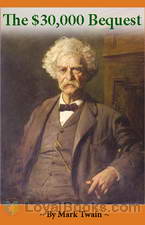 The $30,000 Bequest and Other Stories
The $30,000 Bequest and Other Stories
A collection of comical short stories by renowned American humorist and author Mark Twain, the compilation features 30 stories published in 1906. Presenting a colorful array of tales, the short stories cover various periods of Twain’s writing career, while also allowing him to revise and perfect each story. Exploring various topics including abusive hierarchical power, human recklessness, and backfiring expectations, the collection offers a sweet treat to satisfy every taste. The anthology begins with the story “The $30,000 Bequest” which introduces the married couple Electra and Saladin who live a modest yet comfortable life with their two daughters... | |
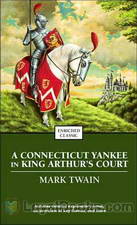 A Connecticut Yankee in King Arthur's Court
A Connecticut Yankee in King Arthur's Court
When Hank Morgan, a practical, no-nonsense Yankee who works in an ammunition factory as a head superintendent gets into a fight with an aggressive employee, little does he know what's in store for him. The bully lays Morgan low with a skull-crushing blow delivered with a crowbar and knocks him out. When Morgan regains consciousness, he finds himself transported back in time, to the sixth century. From here on, the story describes the travails of a hard-boiled, true blue American with strong democratic values who has to deal with medieval feudalism and ancient customs! A Connecticut Yankee in King Arthur's Court was published in 1889... | |
 A Dog's Tale
A Dog's Tale
A sentimental short story praised for its moving plot and condemnation of scientific experimentation on animals, Mark Twain efficiently delivers a truly captivating piece. First appearing in Harper’s Magazine in 1903, A Dog's Tale was later published as a pamphlet for the National Anti-Vivisection Society. The tale focuses on the life of Aileen, a misunderstood dog who experiences the ups and downs of life, while cruelly subjected to suffering because of the shallow belief of her inferiority amidst humans... | |
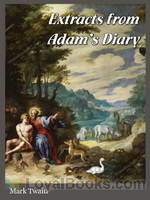 Extracts from Adam's Diary
Extracts from Adam's Diary
Get the true story of Adam and Eve, straight from the source. This humorous text is a day-to-day account of Adam’s life from happiness in the “GARDEN-OF-EDEN” to their fall from grace and the events thereafter. Learn how Eve caught the infant Cain, and Adam takes some time to learn exactly what it is. | |
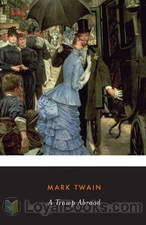 A Tramp Abroad
A Tramp Abroad
A Tramp Abroad is a work of non-fiction travel literature by American author Mark Twain, published in 1880. The book details a journey by the author, with his friend Harris (a character created for the book, and based on his closest friend, Joseph Twichell), through central and southern Europe. While the stated goal of the journey is to walk most of the way, the men find themselves using other forms of transport as they traverse the continent. The book is often thought to be an unofficial sequel to an earlier Twain travel book,The Innocents Abroad... | |
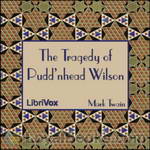 The Tragedy of Pudd'nhead Wilson
The Tragedy of Pudd'nhead Wilson
It was published in 1893–1894 by Century Magazine in seven installments, and is a detective story with some racial themes. The plot of this novel is a detective story, in which a series of identities — the judge’s murderer, Tom, Chambers — must be sorted out. This structure highlights the problem of identity and one’s ability to determine one’s own identity. Broader issues of identity are the central ideas of this novel. One of Twain’s major goals in this book was to exploit the true nature of Racism at that period... | |
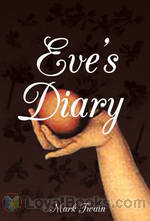 Eve's Diary
Eve's Diary
Eve's Diary is a comic short story by Mark Twain. It was first published in the 1905 Christmas issue of the magazine Harper's Bazaar, and in book format in June 1906 by Harper and Brothers publishing house. It is written in the style of a diary kept by the first woman in the Judeao-Christian creation myth, Eve, and is claimed to be "translated from the original MS." The "plot" of this novel is the first-person account of Eve from her creation up to her burial by, her mate, Adam, including meeting and getting to know Adam, and exploring the world around her, Eden... | |
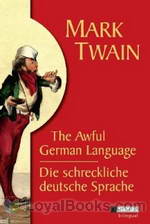 The Awful German Language
The Awful German Language
This long essay is a work of mock philology, one of several appendices to Twain’s travel novel, A Tramp Abroad. In it, Twain explains, complains about, and shows how one might improve upon various aspects of the (awful) German language. His examples of precisely how the German language is awful include the famed “separable verb” – which allows one to put the first part of a given verb at the beginning – and its second part at the end – of a given clause or sentence (which may, indeed, be very long)... | |
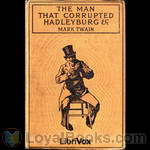 The Man That Corrupted Hadleyburg, and Other Stories
The Man That Corrupted Hadleyburg, and Other Stories
“The Man That Corrupted Hadleyburg” is a piece of short fiction by Mark Twain. It first appeared in Harper’s Monthly in December 1899, and was subsequently published by Harper Collins in the collection The Man That Corrupted Hadleyburg and Other Stories and Sketches (1900). This recording contains all the stories and sketches from the 1900 Harper Collins publication. | |
 Personal Recollections of Joan of Arc, Volumes 1 & 2
Personal Recollections of Joan of Arc, Volumes 1 & 2
Mark Twain’s work on Joan of Arc is titled in full “Personal Recollections of Joan of Arc, by the Sieur Louis de Conte.” De Conte is identified as Joan’s page and secretary. For those who’ve always wanted to “get behind” the Joan of Arc story and to better understand just what happened, Twain’s narrative makes the story personal and very accessible. The work is fictionally presented as a translation from the manuscript by Jean Francois Alden, or, in the words of the published book, “Freely Translated out of the Ancient French into Modern English from the Original Unpublished Manuscript in the National Archives of France... | |
 The Mysterious Stranger
The Mysterious Stranger
The Mysterious Stranger-A Romance- is the final novel attempted by Mark Twain. It was worked on periodically from roughly 1890 up until 1910. The body of work is a serious social commentary by Twain addressing his ideas of the Moral Sense and the "damned human race". The Harper & Brothers publication of the book is illustrated by N.C. Wyeth. | |
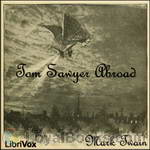 Tom Sawyer Abroad
Tom Sawyer Abroad
Tom Sawyer Abroad is a novel by Mark Twain published in 1894. It features Tom Sawyer and Huckleberry Finn in a parody of Jules Verne-esque adventure stories. In the story, Tom, Huck, and Jim set sail to Africa in a futuristic hot air balloon, where they survive encounters with lions, robbers, and fleas to see some of the world’s greatest wonders, including the Pyramids and the Sphinx. Like Adventures of Huckleberry Finn and Tom Sawyer, Detective, the story is told using the first-person narrative voice of Huck Finn. | |
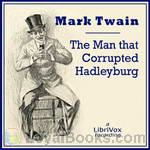 The Man That Corrupted Hadleyburg
The Man That Corrupted Hadleyburg
The town of Hadleyburg had the reputation of being the most honest town in a wide area, indeed an incorruptible community. The elders took this reputation so to heart that they brought up their children shielded from all temptation and trained thoroughly in total honesty. However, a stranger passing through the community was seriously offended by the actions of residents of this Utopia, and he vowed to gain revenge. After several years he came up with the perfect plan to embarrass the town and expose its hypocrisy. (Introduction by Leonard Wilson) | |
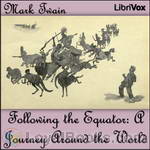 Following the Equator: A Journey Around the World
Following the Equator: A Journey Around the World
Following the Equator (American English title) or More Tramps Abroad (English title) is a non-fiction travelogue published by American author Mark Twain in 1897. Twain was practically bankrupt in 1894 due to a failed investment into a “revolutionary” typesetting machine. In an attempt to extricate himself from debt of $100,000 (equivalent of about $2 million in 2005) he undertook a tour of the British Empire in 1895, a route chosen to provide numerous opportunities for lectures in the English language... | |
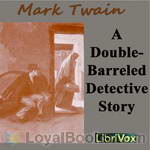 A Double Barreled Detective Story
A Double Barreled Detective Story
A Double Barrelled Detective Story is a novel by Mark Twain (Samuel Clemens), in which Sherlock Holmes finds himself in the American west.At a mining camp in California, Fetlock Jones, a nephew of Sherlock Holmes, kills his master, a silver-miner, by blowing up his cabin. Since this occurs when Holmes happens to be visiting, he brings his skills to bear upon the case and arrives at logically worked conclusions that are proved to be abysmally wrong by an amateur detective with an extremely keen sense of smell, which he employs in solving the case. This could be seen as yet another piece where Twain tries to prove that life does not quite follow logic. | |
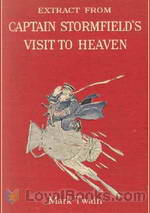 Extract from Captain Stormfield's Visit to Heaven
Extract from Captain Stormfield's Visit to Heaven
This was the last story published by Twain, a few months before he died. The story follows Captain Elias Stormfield on his extremely long cosmic journey to heaven. It deals with the obsession of souls with the "celebrities" of heaven, like Adam and Moses, who according to Twain become as distant to most people in heaven as living celebrities are on Earth. Twain uses this story to show his view that the common conception of heaven is ludicrous and points out the incongruities of such beliefs.A lot of the description of Heaven is given by the character Sandy McWilliams, a cranberry farmer who is very experienced in the ways of heaven... | |
 The Stolen White Elephant
The Stolen White Elephant
"The Stolen White Elephant" was written by Mark Twain and published in 1882. In it, an Indian elephant, en route from India to Britain as a gift to the Queen, disappears in New Jersey. The local police department goes into high gear to solve the mystery but it all comes to a tragic end. Twain's satirical look at the police and newspaper worlds of the 1880's illustrates some of the more outrageous proclivities of each. | |
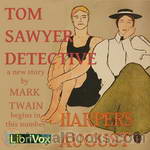 Tom Sawyer, Detective
Tom Sawyer, Detective
Tom Sawyer, Detective is an 1896 novel by Mark Twain. It is a sequel to The Adventures of Tom Sawyer (1876), Adventures of Huckleberry Finn (1884), and Tom Sawyer Abroad (1894). Tom Sawyer attempts to solve a mysterious murder in this burlesque of the immensely popular detective novels of the time. Tom and Huck find themselves with Uncle Silas and his family again (see “Huck Finn”), and much of the drama ends up focusing on Uncle Silas. Like the two preceding novels, the story is told using the first-person narrative voice of Huck Finn. | |
 Alonso Fitz and Other Stories
Alonso Fitz and Other Stories
A collection of Twain short stories including:The Loves Of Alonzo Fitz Clarence And Rosannah EtheltonOn The Decay Of The Art Of LyingAbout Magnanimous-Incident Literature The Grateful Poodle The Benevolent Author The Grateful HusbandPunch, Brothers, PunchThe Great Revolution In PitcairnThe Canvasser's TaleAn Encounter With An InterviewerParis NotesLegend Of Sagenfeld, In GermanySpeech On The BabiesSpeech On The WeatherConcerning The American LanguageRogers | |
 The Treaty with China
The Treaty with China
"A good candidate for 'the most under-appreciated work by Mark Twain' would be 'The Treaty With China,' which he published in the New York Tribune in 1868. This piece, which is an early statement of Twain's opposition to imperialism and which conveys his vision of how the U.S. ought to behave on the global stage, has not been reprinted since its original publication until now." (the online, open-access "Journal of Transnational American Studies" published it in the spring, 2010). | |
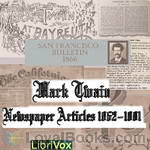 Newspaper Articles by Mark Twain
Newspaper Articles by Mark Twain
This is a collection of newspaper articles written by Samuel Clemens, for various newspapers, between 1862 and 1881. After Feb 3rd 1863, he began using the pen name Mark Twain. This compilation is the work of Project Gutenberg and contains articles from TERRITORIAL ENTERPRISE, THE SAN FRANCISCO DAILY MORNING CALL, THE SACRAMENTO DAILY UNION, DAILY HAWAIIAN HERALD, ALTA CALIFORNIA, THE CHICAGO REPUBLICAN, and THE GALAXY. (Introduction by John Greenman) | |
 Mark Twain's (Burlesque) Autobiography and First Romance
Mark Twain's (Burlesque) Autobiography and First Romance
Mark Twain's (Burlesque) Autobiography and First Romance, a short volume, published by Sheldon & Co., NY in 1871, is Mark Twain's third book. It consists of two stories - First Romance, which had originally appeared in The Express in 1870, and A Burlesque Autobiography (bearing no relationship to Twain's actual life), which first appeared in Twain's Memoranda contributions to the Galaxy. Rather, the content consists of a few short stories of fictional characters who are supposedly part of Twain's lineage... | |
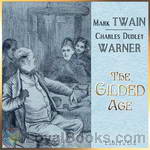 The Gilded Age, A Tale of Today
The Gilded Age, A Tale of Today
The Gilded Age: A Tale of Today is an 1873 novel by Mark Twain and Charles Dudley Warner that satirizes greed and political corruption in post-Civil War America. The term gilded age, commonly given to the era, comes from the title of this book. Twain and Warner got the name from Shakespeare's King John (1595): "To gild refined gold, to paint the lily... is wasteful and ridiculous excess." Gilding a lily, which is already beautiful and not in need of further adornment, is excessive and wasteful, characteristics of the age Twain and Warner wrote about in their novel... | |
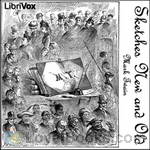 Sketches New and Old
Sketches New and Old
This collection of 63 writings by Mark Twain was published in 1875. Among other sketches, it contains “The Jumping Frog” in the original English, followed by a French translation (read here by Caroline Sophie) which Twain re-translated into English, showing how the French translation of his work was “badly flawed.” In many of these sketches, Twain shows his talent for outrageous and hilarious inventiveness, often in reaction to current events. | |
 Those Extraordinary Twins
Those Extraordinary Twins
"Those Extraordinary Twins" was published as a short story, separate and distinct from its origins inside Twain's "The Tragedy of Pudd'nhead Wilson". As Twain explains, he extricated "Twins" from "Pudd'nhead" when he found, as he was writing, that he'd created a farce inside a tragedy. This is the excised farce, a story about Italian Siamese twins who completely take over a small Missouri town, splitting it down the middle with half supporting one head and the other, the other. (Introduction by John Greenman) | |
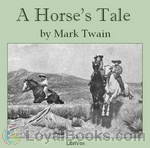 A Horse's Tale
A Horse's Tale
A Horse’s Tale is a novel by Mark Twain (Samuel Clemens), written partially in the voice of Soldier Boy, who is Buffalo Bill’s favorite horse, at a fictional frontier outpost with the U.S. 7th Cavalry. With a fanciful mix of points of view, we hear the story of Cathy and her relationship with Soldier Boy and the soldiers of the 7th Cavalry. A surprisingly graphic depiction of a Spanish bullfight leaves no doubt where Mark Twain’s sympathies lie. (Introduction by John Greenman & Wikipedia) | |
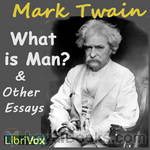 What is Man? and Other Essays
What is Man? and Other Essays
"What Is Man?", published by Mark Twain in 1906, is a dialogue between a young man and an older man jaded to the world. It involves ideas of destiny and free will, as well as of psychological egoism. The Old Man asserted that the human being is merely a machine, and nothing more. The Young Man objects, and asks him to go into particulars and furnish his reasons for his position. This collection of short stories covers a wide range of Twain's interests: the serious, the political and the ironically humorous. | |
 Fenimore Cooper's Literary Offences
Fenimore Cooper's Literary Offences
This is Mark Twain's vicious and amusing review of Fenimore Cooper's literary art. It is still read widely in academic circles. Twain's essay, Fenimore Cooper's Literary Offenses (often spelled "Offences") (1895), particularly criticized The Deerslayer and The Pathfinder. Twain wrote at the beginning of the essay: 'In one place in Deerslayer, and in the restricted space of two-thirds of a page, Cooper has scored 114 offenses against literary art out of a possible 115. It breaks the record.' Twain listed 19 rules 'governing literary art in domain of romantic fiction', 18 of which Cooper violates in The Deerslayer. (Introduction by Wikipedia and John Greenman) | |
 The Curious Republic of Gondour and Other Whimsical Sketches
The Curious Republic of Gondour and Other Whimsical Sketches
As the title reveals, these stories are a collection of some of Mark Twain's more fanciful and eccentric works. They run the gamut from political commentary to our species' need to "be remembered" somehow. Taken as a whole the stories are "whimsical". Taken individually, they speak the truth in different ways. (Introduction by John Greenman) | |
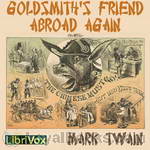 Goldsmith's Friend Abroad Again
Goldsmith's Friend Abroad Again
This satire on the U.S.A.'s myth of being the "Home of the Oppressed, where all men are free and equal", is unrelenting in its pursuit of justice through exposure. It draws a scathingly shameful portrait of how Chinese immigrants were treated in 19th century San Francisco. (Introduction by John Greenman) | |
 In Defense of Harriet Shelley
In Defense of Harriet Shelley
Mark Twain pulls no punches while exposing the "real" Percy Shelley in this scathing condemnation of Edward Dowden's "Life of Shelley". Even though, as Twain writes, "Shelley's life has the one indelible blot upon it, but is otherwise worshipfully noble and beautiful", Twain shows how Shelley's extra-marital conduct might easily be seen to have been the cause of his wife Harriet's suicide. (Introduction by John Greenman) | |
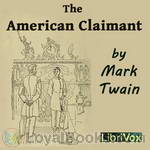 The American Claimant
The American Claimant
The American Claimant is an 1892 novel by American humorist and writer Mark Twain. The story focuses on the class differences and expectations of monarchic, hierarchical Britain and the upstart, "all men are created equal" America. Twain wrote the novel with the help of phonographic dictation, the first author (according to Twain himself) to do so. This was also (according to Twain) an attempt to write a book without mention of the weather, the first of its kind in fictitious literature. Indeed, all the weather is contained in an appendix, at the back of the book, which the reader is encouraged to turn to from time to time. | |
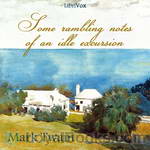 Some Rambling Notes of an Idle Excursion
Some Rambling Notes of an Idle Excursion
Written for the Atlantic magazine in 1877, this is a collection of stories about a trip Mark Twain made with some friends to Bermuda. It contains fascinating descriptions of Bermuda the island, and some of its people as well as an explanation of why Bermuda's houses are "so white". | |
 How to Tell a Story, and Other Essays
How to Tell a Story, and Other Essays
In his inimitable way, Mark Twain gives sound advice about how to tell a story, then lets us in on some curious incidents he experienced, and finishes with a trip that proves life-changing. | |
 Works of Mark Twain
Works of Mark Twain
| |
 Essays on Paul Bourget
Essays on Paul Bourget
Collection of short essays concerning French novelist and critic Paul Bourget. Included: "What Paul Bourget Thinks of Us" and "A Little Note to M. Paul Bourget". | |
 Mark Twain's Speeches
Mark Twain's Speeches
Spanning the time between 1872 and the year before he died, this collection of after-dinner speeches, random thoughts to "the press", etc. clearly documents, once again, the truly eclectic mind of Samuel Clemens. It also demonstrates how he dealt with adulation, compliments and notoriety...head on! This collection is a treasure-trove of Twain sayings, witticisms and pronouncements on a huge galaxy of issues and concerns in his life. | |
 On the Decay of the Art of Lying
On the Decay of the Art of Lying
| |
 Letters of Mark Twain, Complete
Letters of Mark Twain, Complete
These letters were arranged in two volumes by Albert Bigelow Paine, Samuel L. Clemens's literary executor, as a supplement to Mark Twain, A Biography, which Paine wrote. They are, for the most part, every letter written by Clemens known to exist at the time of their publication in 1917. They begin with a fragment of a letter from teenaged Sam Clemens to his sister, Pamela, and conclude with a letter to his attorney two weeks before his death. These letters give us some degree of insight into the evolution of Twain's style of speech and prose over the period of his lifetime; they are a small window into the psyche that created the various characters of his stories... | |
 Quotes and Images From The Works of Mark Twain
Quotes and Images From The Works of Mark Twain
| |
 Mark Twain's Letters
Mark Twain's Letters
| |
 Editorial Wild Oats
Editorial Wild Oats
| |
 The Facts Concerning the Recent Carnival of Crime in Connecticut
The Facts Concerning the Recent Carnival of Crime in Connecticut
| |
 The Treaty With China, its Provisions Explained
The Treaty With China, its Provisions Explained
| |
 Quotations from the Collected Works of Mark Twain
Quotations from the Collected Works of Mark Twain
| |
By: Lucy Maud Montgomery (1874-1942) | |
|---|---|
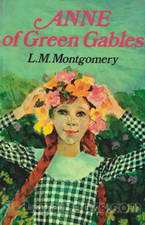 Anne of Green Gables
Anne of Green Gables
Montgomery’s literary classic recounts the exciting adventures undertaken by the fiery eleven-year-old Anne Shirley, an orphan girl accidentally adopted by middle aged siblings Matthew and Marilla Cuthbert. A coming-of-age novel, Anne of Green Gables focuses on Anne’s new life at Green Gables farm in Avonlea and her adjustment into the Prince Edward Island community. The story launches when the aging siblings Matthew and Marilla decide that they could use an extra hand around their farm, and believe that adopting an orphan boy would be an appropriate solution... | |
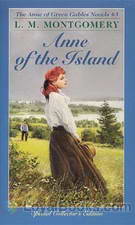 Anne of the Island
Anne of the Island
Anne of the Island is the third book in the Anne of Green Gables series following the adventures of its heroine Anne Shirley as she leaves for Redmond College in the busy city of Kingsport to study for her bachelor’s degree. The third installment in the series sees the beloved protagonist experience new adventures and challenges outside the familiar setting of Avonlea. The novel kicks off when Anne decides to pursue her dream of a higher education, and subsequently leaves her two year teaching position at the school in Avonlea and begins her studies at Redmond College... | |
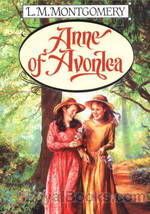 Anne of Avonlea
Anne of Avonlea
If you've read and loved Anne of Green Gables you will surely be delighted to follow Anne's further adventures in Anne of Avonlea. In this sequel, we find Anne Shirley teaching in Avonlea School though she continues her studies at home with Gilbert Blythe. Lucy Maud Montgomery first published the best selling Anne of Green Gables in 1908. Enthused by the amazing success of this account of a young orphan girl who arrives by mistake on Prince Edward Island, Canada, the author followed it up with five more sequels, tracing Anne's career and life... | |
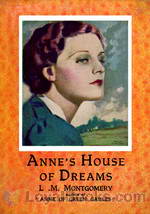 Anne's House of Dreams
Anne's House of Dreams
Anne’s House of Dreams is the fifth book in the Anne of Green Gables series, which features the culmination of an epic love story. The installment chronicles the lives of Anne and Gilbert as they experience life as a newlywed couple and build the foundation of their future together. A tale uniting the much-loved characters also brings a farewell to Anne Shirley and officially welcomes Anne Blythe. The novel begins with the preparations for the wedding between Anne and her one true love Gilbert Blythe, who is finally a qualified doctor... | |
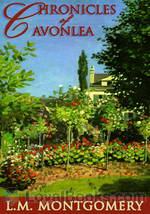 Chronicles of Avonlea
Chronicles of Avonlea
A collection of short stories first published in 1912, the book focuses on events occurring in the popular fictional village of Avonlea, which is notorious as the hometown of Anne Shirley. Comprised of 12 short stories, the Chronicles of Avonlea present a different view of the town, with the introduction of many new gripping characters, which prove to be just as endearing as their most renowned resident. Tales of everyday snippets of life proving to be humorous, identifiable, and heartwarming, the collection is an effective reinvigoration to the classic setting... | |
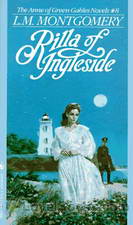 Rilla of Ingleside
Rilla of Ingleside
Rilla of Ingleside is the eighth book in the Anne of Green Gables series and focuses on the inspiring journey of Rilla Blythe, the youngest daughter of Anne and Gilbert, as she transforms from a carefree young girl into an enduring young woman swept into the chaos of war. Written from a female perspective, Montgomery accurately depicts a time in history, as she provides a contemporaneous account of the war and serves up the most emotional book in the series. Set during the First World War, the novel explores themes of coming of age, love, separation, and most importantly women’s roles during the war... | |
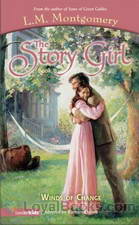 The Story Girl
The Story Girl
Revealed to be a personal favorite by Montgomery herself, The Story Girl follows the lives of a group of young children as they experience a summer of charming and realistically clumsy adventures. Published in 1911, the novel explores themes of childhood innocence and its transience, while highlighting the value of intangible things which prove to be the very essence of life. The novel begins when the young narrator Beverly King and his brother Felix are sent to stay with their Aunt Janet and Uncle Alec at their country estate over the summer, while their widowed father is away on business abroad... | |
 The Golden Road
The Golden Road
In the sequal to The Story Girl Sara Stanley returns to join the King children in publishing their own local magazine to entertain the town of Carlisle. | |
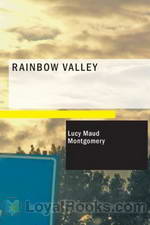 Rainbow Valley
Rainbow Valley
If you've read and loved Anne of Green Gables, you'd definitely like to add Rainbow Valley by Lucy Maud Montgomery to your collection. Published in 1919, it is the seventh book in the series and follows the further life and adventures of Anne Shirley. At Ingleside, Anne is now happily married to her childhood friend the devoted Gilbert Blythe and have now been together blissfully for fifteen years. They have six children. The book opens with the return of Anne and Gilbert (who is now a brilliant doctor) from a sojourn in London, where they had gone to attend a big medical congress... | |
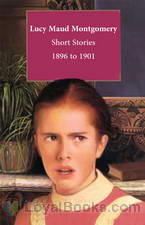 Lucy Maud Montgomery Short Stories, 1896 to 1901
Lucy Maud Montgomery Short Stories, 1896 to 1901
Stories from 1896 to 1901. Lucy Maud Montgomery was born at Clifton (now New London), Prince Edward Island, Canada, on November 30, 1874. She achieved international fame in her lifetime, putting Prince Edward Island and Canada on the world literary map. Best known for her "Anne of Green Gables" books, she was also a prolific writer of short stories and poetry. She published some 500 short stories and poems and twenty novels before her death in 1942. | |
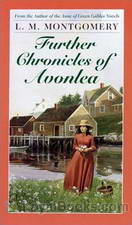 Further Chronicles of Avonlea
Further Chronicles of Avonlea
Further Chronicles of Avonlea is a collection of short stories by L.M. Montgomery and is a sequel to Chronicles of Avonlea. Published in 1920, it includes a number of stories relating to the inhabitants of the fictional Canadian village of Avonlea and its region, located on Prince Edward Island. The book was published without the permission of L.M. Montgomery, and was formed from stories she had decided not to publish in the earlier Chronicles of Avonlea. Montgomery sued her publishers, L.C. Page & Co, and won $18,000 in damages after a legal battle lasting nearly nine years. | |
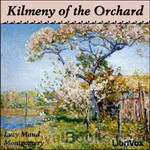 Kilmeny of the Orchard
Kilmeny of the Orchard
Eric Marshall is all that a well brought-up young man should be. Handsome, steadfast, and full of ambition, he is expected to expand the Marshall & Company empire — and to marry a woman suitable to replace his mother in Nova Scotia’s finest circles. When a sick friend asks for a favour, becoming a substitute schoolmaster in the Prince Edward Island countryside seems the perfect post-graduation lark. But when Eric wanders into an old orchard at twilight, his life will be changed forever… | |
By: Unknown | |
|---|---|
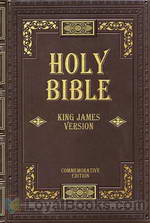 The Bible, King James Version (KJV) - Introduction
The Bible, King James Version (KJV) - Introduction
Variously known as the Greatest Story Ever Told, The Book of Books and many other names, the Bible is reputed to be the biggest bestseller of all time. Translated into thousands of world languages and studied, worshiped and revered in the four corners of the earth, the Bible remains Christianity's canonical text and is considered the Word of God. The King James Version (KJV) is a translation commissioned by the Church of England in 1604 and the work continued till 1611. However, it wasn't the first translation into English from the original Hebrew, and some portions in Aramaic... | |
By: William Shakespeare (1564-1616) | |
|---|---|
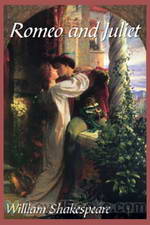 Romeo and Juliet
Romeo and Juliet
William Shakespeare’s most well-known play is more than most people realize. While it is the story of star-crossed lovers, Romeo and Juliet, it is also the story of two families in the middle of a bitter feud. Many people avoid the story because they believe it will be too difficult to read, but this is not true at all. Within a few paragraphs, the play captures your imagination and attention. Juliet is 13 years old and is love with the son of her father’s enemy. Her father has promised that she will marry another boy when it is time, but she refuses to accept the suit... | |
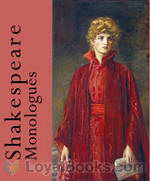 Shakespeare Monologues
Shakespeare Monologues
This is truly a delightful compilation of some of the best known and loved passages from William Shakespeare's plays. Most readers would be familiar with all or at least some of them. If you've studied Shakespeare in school or college, plays like The Merchant of Venice and Macbeth were probably assigned texts. However, if you haven't encountered these plays before, Shakespeare Monologues is a great volume to browse through and enjoy at leisure. It's important to know that there is a distinction between the terms “monologue” and “soliloquy... | |